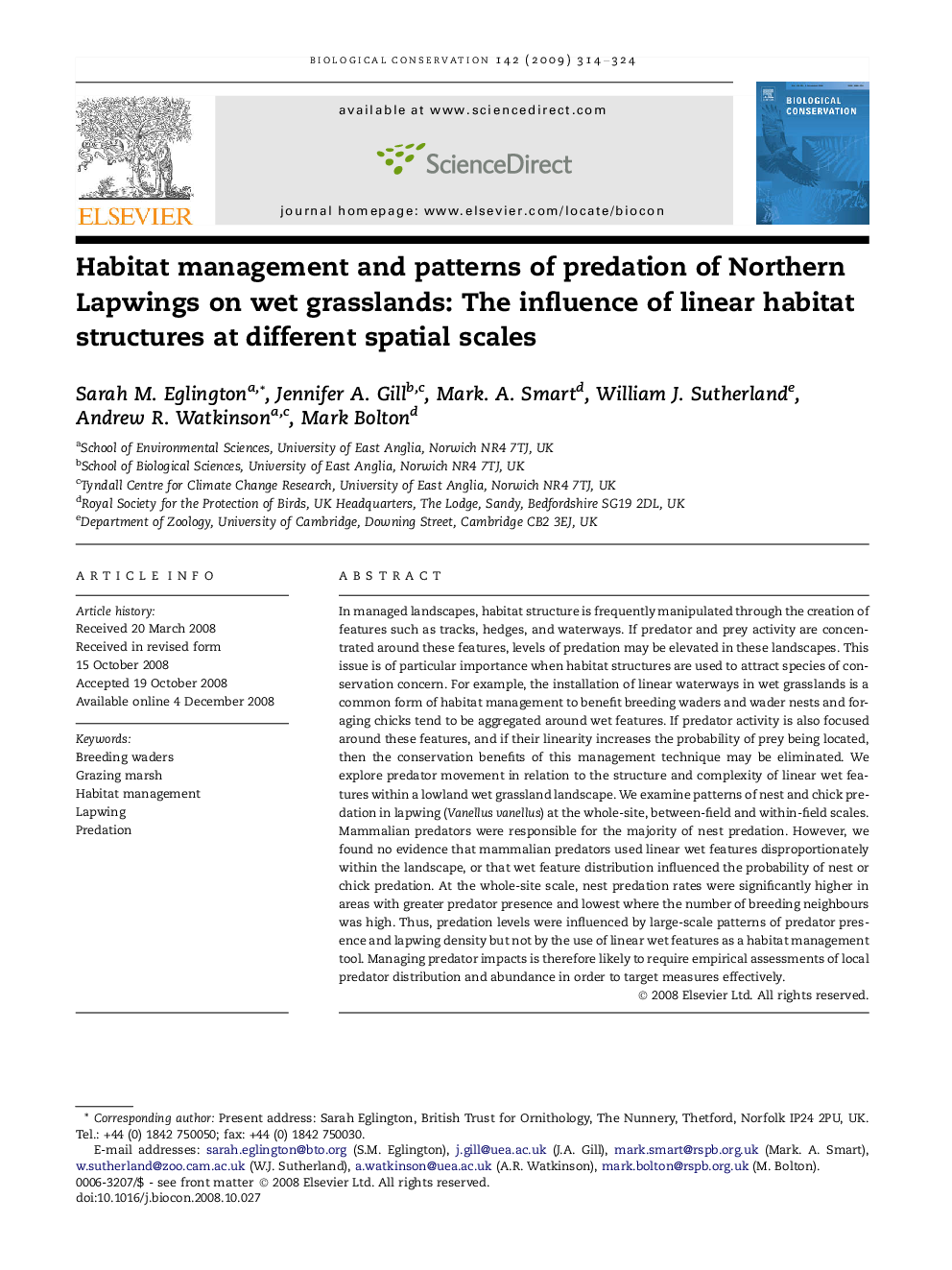| کد مقاله | کد نشریه | سال انتشار | مقاله انگلیسی | نسخه تمام متن |
|---|---|---|---|---|
| 4386580 | 1304571 | 2009 | 11 صفحه PDF | دانلود رایگان |

In managed landscapes, habitat structure is frequently manipulated through the creation of features such as tracks, hedges, and waterways. If predator and prey activity are concentrated around these features, levels of predation may be elevated in these landscapes. This issue is of particular importance when habitat structures are used to attract species of conservation concern. For example, the installation of linear waterways in wet grasslands is a common form of habitat management to benefit breeding waders and wader nests and foraging chicks tend to be aggregated around wet features. If predator activity is also focused around these features, and if their linearity increases the probability of prey being located, then the conservation benefits of this management technique may be eliminated. We explore predator movement in relation to the structure and complexity of linear wet features within a lowland wet grassland landscape. We examine patterns of nest and chick predation in lapwing (Vanellus vanellus) at the whole-site, between-field and within-field scales. Mammalian predators were responsible for the majority of nest predation. However, we found no evidence that mammalian predators used linear wet features disproportionately within the landscape, or that wet feature distribution influenced the probability of nest or chick predation. At the whole-site scale, nest predation rates were significantly higher in areas with greater predator presence and lowest where the number of breeding neighbours was high. Thus, predation levels were influenced by large-scale patterns of predator presence and lapwing density but not by the use of linear wet features as a habitat management tool. Managing predator impacts is therefore likely to require empirical assessments of local predator distribution and abundance in order to target measures effectively.
Journal: Biological Conservation - Volume 142, Issue 2, February 2009, Pages 314–324